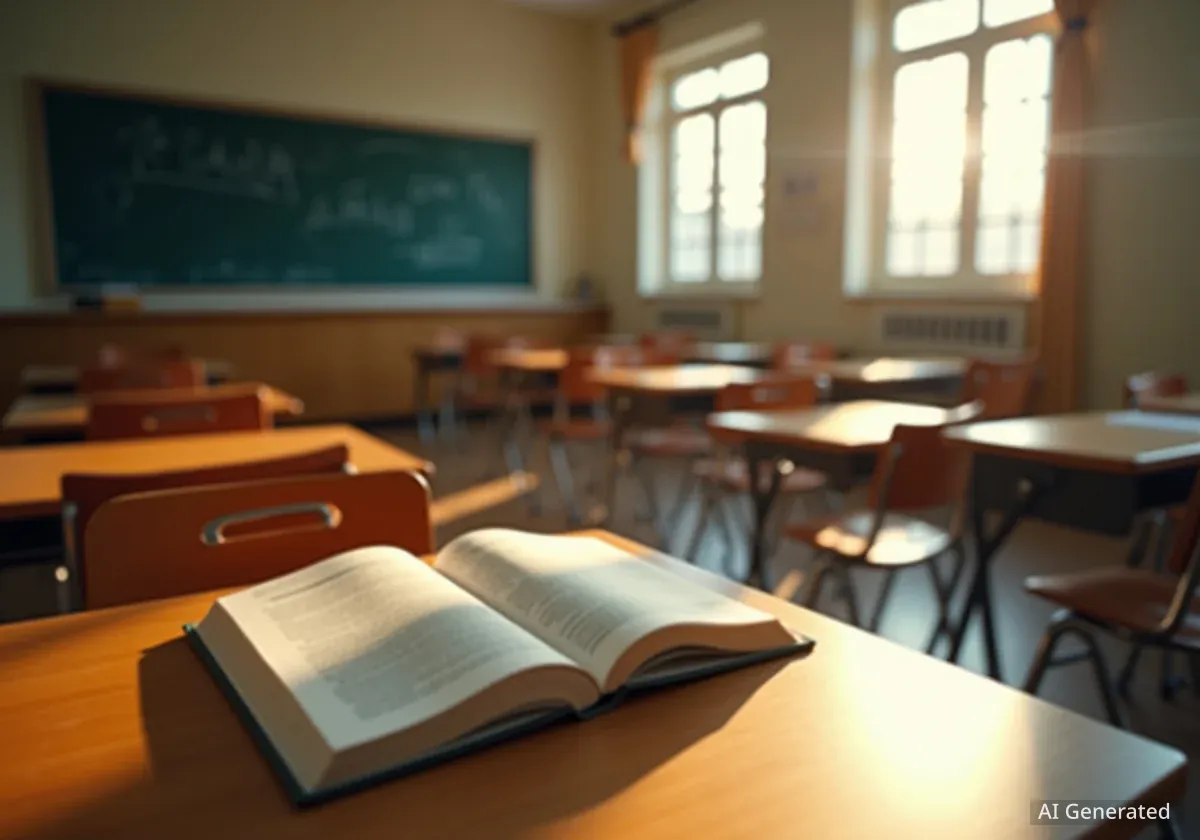Maryland education leaders are now open to revising the state's public school funding model. This shift follows an investigation by Project Baltimore, which highlighted that millions of dollars were allocated to schools for students not present in classrooms. For four years, state education officials had not addressed these concerns. However, a recent Fox45 News report appears to have prompted this change in stance.
The investigation revealed that Maryland schools received an estimated $168 million last year to educate students who were not physically attending classes. This significant financial discrepancy has brought the state's funding mechanisms under scrutiny.
Key Takeaways
- Maryland education leaders are now willing to change the state's school funding method.
- Project Baltimore revealed schools received an estimated $168 million for absent students.
- The current system counts enrollment on a single day, September 30.
- This one-day count may have led to schools being underfunded by $140 million for present students.
- State Delegate April Rose has proposed legislation for multiple annual enrollment counts.
Current Funding System Under Scrutiny
Maryland allocates billions of tax dollars to public education each year. The vast majority of this funding is based on student enrollment figures. These figures are determined by a single count conducted on September 30 each year.
However, student populations are often fluid. Students frequently move in and out of school districts throughout the academic year. Under the current system, the funding does not adjust to these shifts.
Funding Discrepancy
Maryland public schools received approximately $20,000 per student in 2024. The one-day enrollment count potentially led to an estimated $140 million underfunding for students who enrolled after September 30.
Dr. Joshua Michael, President of the Maryland State Board of Education, acknowledged the issues. "As you've dug into this about enrollment data, I've learned a lot in your reporting and our team really diving into this for us," Michael stated. "From looking at it now, there could be a better way of representing the students that are actually in our schools."
Newly released state data suggests that this method may result in schools being underfunded for students who are actually present. Michael indicated that this issue requires immediate attention.
Calls for Legislative Action
The Maryland State Department of Education traditionally keeps much of its Pre-K through 12 student enrollment data private. This limited access to information has made it difficult for external organizations, like Project Baltimore, to fully assess the funding system.
Despite these limitations, Project Baltimore's analysis consistently pointed to problems with how funding aligns with student attendance. The recent release of previously non-public data by the Maryland State Department of Education to Fox45 News provided clearer insights.
Historical Data Trend
Data from 2019 onward shows a consistent pattern: more students enrolled in Maryland public schools after the September 30 count than withdrew. In 2024, there were 7,342 more students at the end of the school year compared to the beginning. Schools did not receive additional funding for these students because they enrolled after the official count date.
This situation creates a significant funding gap. Chris Papst from Project Baltimore highlighted this to Dr. Michael. "That's a lot of money that schools are not getting to educate students who are there. But at the same time, there are schools that are getting money to educate students who are not there," Papst noted.
"Right. And it is a system that is inherently imperfect," Dr. Michael agreed. "I think it's a big problem, Chris."
Lawmakers in Annapolis will have another chance to address this issue during the upcoming legislative session. State Delegate April Rose, representing Carroll and Frederick Counties, has been a vocal critic of the current system.
"We keep funding based on that one snapshot. I think that's fiscally irresponsible," said Delegate Rose. She has prefiled legislation aimed at changing the enrollment count to multiple times a year. This change would ensure that schools receive funding for all students who are actively attending classes.
Future Outlook for Maryland Schools
The willingness of state education leaders to consider changes marks a notable shift. Dr. Michael expressed his readiness to collaborate with Delegate Rose on new legislation. The goal is to develop a more accurate and equitable school funding model.
"This is really a learning lesson for the state, on getting a lot better at ensuring funding follows the kids up to the schools that they're at," Michael explained. This sentiment suggests a commitment to improving the financial support for Maryland's public schools.
Dr. Carey Wright, the State Superintendent of Schools, also confirmed her openness to reviewing Maryland's enrollment counting methods for funding purposes. This widespread acknowledgment of the problem and the willingness to seek solutions offer hope for a more responsive and fair system.
- The current one-day enrollment count is seen as outdated and ineffective for transient student populations.
- Legislative efforts are underway to implement multiple enrollment counts per year.
- This reform aims to ensure schools receive adequate funding for all enrolled students, regardless of their enrollment date.
- State education leaders, including the State Board President and Superintendent, support exploring changes.
The proposed changes could significantly impact how Maryland's public schools operate. By aligning funding more closely with actual student attendance, schools could gain better resources to support their students. This reform effort highlights the importance of accurate data in ensuring effective public service delivery.





